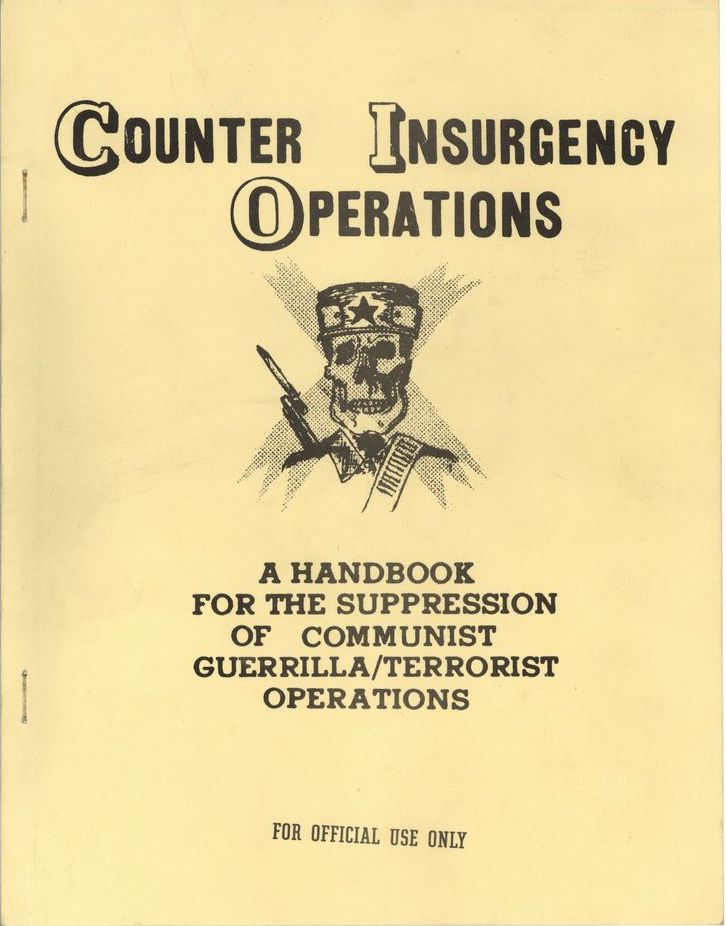"Why another look at the Malayan insurgency?" wrote Robert Komer, a consultant with RAND Corporation and a former National Security Council staffer, in 1972. His report, The Malayan Emergency in Retrospect: The Organization of a Successful Counterinsurgency Effort, was not the first instance of RAND delving into Great Britain’s defeat of communist guerrillas during the Malayan Emergency of 1948–60. By the mid-1960s, the think tank had produced several studies of this counterinsurgency campaign, often at the behest of the US government, as the American involvement in Vietnam deepened. As Komer wrote, all of these reports—including his own—were intended to help “determine what lessons of future value the U.S. military establishment may learn” from Britain’s victory. With America clearly failing in Vietnam, Britain’s success was “even more relevant.” Importantly, Komer asserted that US officials had not adequately pored over the lessons of the Malayan Emergency. In arguing this, he was not alone. But he was wrong.

This 1961 edition of the US Army’s Counter Insurgency Operations handbook built on “lessons” learned from the Malayan Emergency. Credit: Papers of John F. Kennedy. Presidential Papers. President’s Office Files/John F. Kennedy Library and Museum/Digital identifier JFKPOF-080-014-p0003
It is often said that American policymakers and military strategists fail to learn from history. But as the example of the Vietnam War suggests, it was not for a lack of effort. Komer’s report helped propound a myth that emerged by the end of the conflict: that Americans had woefully ignored Britain’s secrets to a successful counterinsurgency. But the Malayan Emergency was, in fact, a Cold War obsession, and at the very highest levels.
What was the Malayan Emergency? In 1948, London had placed Malaya under emergency conditions when the guerrillas of the Malayan Communist Party (MCP) launched a campaign to expel Britain from the country. Over the 1950s, Britain and its local allies decimated the communists, ensuring that Malaya’s decolonization would proceed in an anticommunist, pro-British direction. Independent Malaya’s West-friendly leaders officially ended the emergency in 1960.
As US official records show, American policymakers and analysts thought deeply about the emergency, beginning in earnest in the late 1950s, when Britain turned the tide against the MCP. In December 1960, soon after the emergency ended, the US Army’s Handbook for the Suppression of Communist Guerrilla/Terrorist Operations looked to the Malayan example as one resource for “practical measures” that could be used against guerrilla activities the world over. That same year, the US Army obtained the British counterinsurgency manual Conduct of Anti-Terrorist Operations in Malaya, or ATOM, as British military staff called it. Soon, all of the Army’s service schools received copies of ATOM to formulate their counterinsurgency doctrine. By the beginning of 1962, that counterinsurgency doctrine informed the US Army’s training programs for more than 60 client states in the Caribbean, Latin America, the Middle East, Asia, and Africa, helping conservative, US-friendly regimes suppress local revolutionary forces.
The American preoccupation with the Malayan example went deeper. During the Kennedy administration, US officials kept cranking out reports about Britain’s recipe for success. Washington also tasked RAND with “distill[ing] lessons and insights” from counterinsurgency experts who had a “proven record of success.” Over the next few years, RAND went to great lengths to learn from Britain’s counterinsurgency, drawing on the expertise of military officers with experience in Malaya for a symposium, as well as research in British government archives. The report resulting from the latter project was completed in September 1964, weeks after President Lyndon Johnson secured authority to wage war in Vietnam. It comprised 5 interrelated studies, totaling more than 600 pages, which—like all prior analyses, RAND or otherwise—dealt with counterinsurgency, intelligence, resettlement, food control, and winning the trust of the populace. Only the year before, a report from the Joint Chiefs of Staff, Status of Military Counterinsurgency Program, included an annotated bibliography, which today reads like a showcase of how meticulously planners mined the emergency for ways to enhance US counterinsurgency doctrine.
Even so, was the Malayan Emergency even relevant to the Vietnam War? From the war’s early stages, scholars had enumerated the differences between Malaya’s experience and the communist insurgency in South Vietnam. Among other factors, they noted that the MCP fighters likely never numbered more than 5,000, whereas the Vietcong were 300,000 strong by 1962; additionally, the Vietcong could rely on North Vietnam for protection, while the MCP lacked a sympathetic neighbor in mainland Southeast Asia.
There are many reasons that America foundered in Vietnam. Being superficial in studying a lesson from history, however, was not one. US interest in the lessons of Britain’s victory in Malaya was, in a word, obsessive. Cold warriors beheld with awe the British Empire’s tenacity in the context of the nationalist revolutions that had expelled the French and Dutch empires from the region after World War II. At base, studying effective counterrevolution offered US leaders lessons in repurposing Britain’s history of “imperial policing” throughout the world. These lessons—their fundamental imperial logic—quickly undergirded America’s network of client states, which received US counterinsurgency training programs during the Cold War. South Vietnam represented one troublesome node in this otherwise durable and expanding US network, just one piece lost by a nascent, world-spanning American empire.
Fast-forward into the early 21st century, with the United States struggling against Iraqi insurgents, and the myth that military and policy analysts don’t try to learn from history still animates US policy-thinking about foreign wars. It fuels an American fixation with revisiting the Malayan Emergency to distill its lessons. Indeed, the new introduction to the US Army and Marine Corps’ counterinsurgency field manual of 2006, published by the University of Chicago Press the next year, described the manual’s “radical” doctrine as one that “heartily embraces a traditional—some would say atavistic—British method of fighting insurgency.” The intended takeaway: America will not repeat the Vietnam-era mistake of superficially reviewing the Malayan Emergency. The real lesson: the obsession still burns bright after all these years.
Wen-Qing Ngoei is assistant professor of history at the Nanyang Technological University, Singapore. He completed his PhD in US foreign relations at Northwestern University. His book, Arc of Containment: Britain, the United States, and Anticommunism in Southeast Asia (Cornell Univ. Press, 2019), examines how British decolonization intertwined with Southeast Asian anticommunism to shape US policy in the wider region. For more information, visit his website.
Tags: Perspectives Daily Asia/Pacific Military History Political History

This work is licensed under a Creative Commons Attribution-NonCommercial-NoDerivatives 4.0 International License. Attribution must provide author name, article title, Perspectives on History, date of publication, and a link to this page. This license applies only to the article, not to text or images used here by permission.
The American Historical Association welcomes comments in the discussion area below, at AHA Communities, and in letters to the editor. Please read our commenting and letters policy before submitting.
Comment
Please read our commenting and letters policy before submitting.







